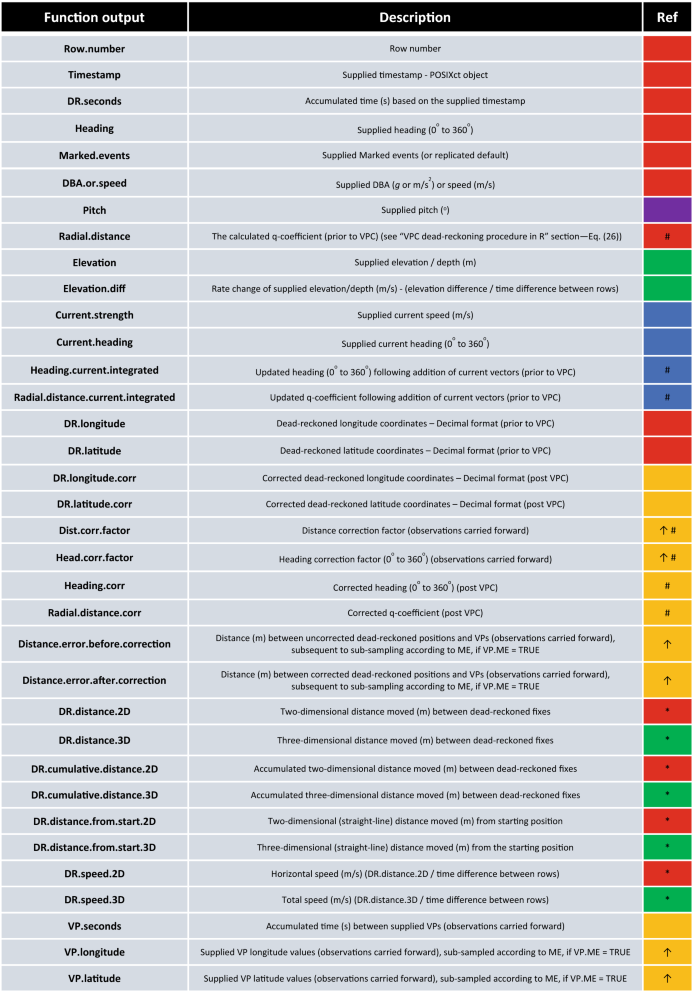

- The shading of Ref refers to when the outputs occur; red shading = always, purple shading = when pitch data are supplied, green shading = when elevation/depth data are supplied, blue = when current data are supplied and orange = when the user opts to undertake VPC. The symbol * demonstrates that the metrics will be derived from VPC tracks when correction is initialised. Note that, subsequent to reverse dead-reckoning, the data frame is reverted (back to original time order), though as a result, observations appear to be carried backwards in some instances, indicated by ↑. Due to the nature of reverse dead-reckoning (cf. Additional file 4), some input fields are shifted forward one row following the initial inversion of data. As such, fields indicated by #, are one row further forward in time (this is important when relating Head.corr.factor and Heading.corr output to the equivalent (uncorrected) Heading output. However, when currents are integrated, the Head.corr.factor and Heading.corr outputs refer to Heading.current.integrated and these are synchronised row-wise. All heading related data are rotated back 180 degrees following reverse dead-reckoning



